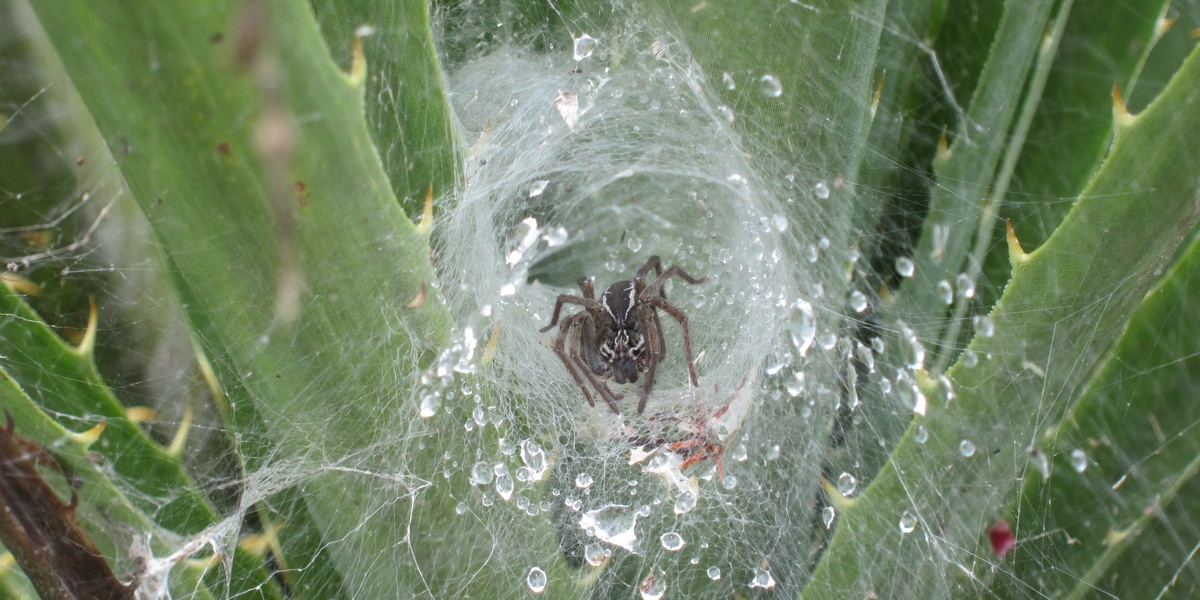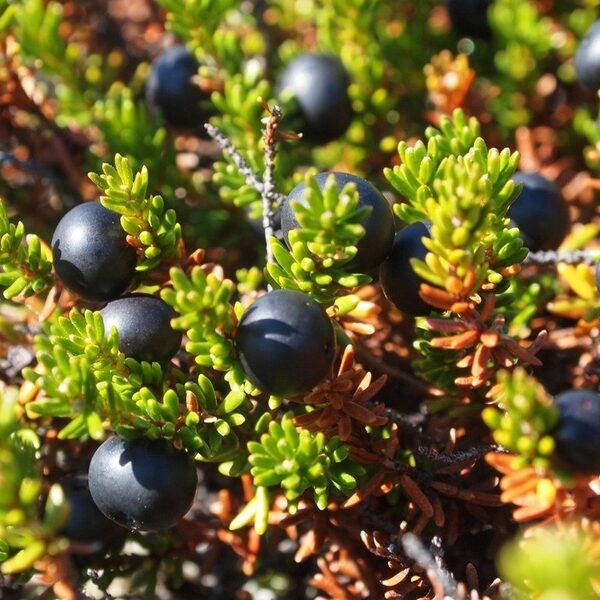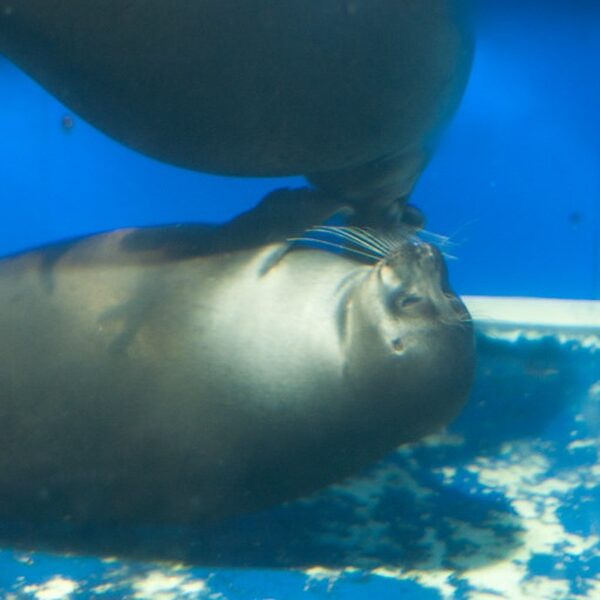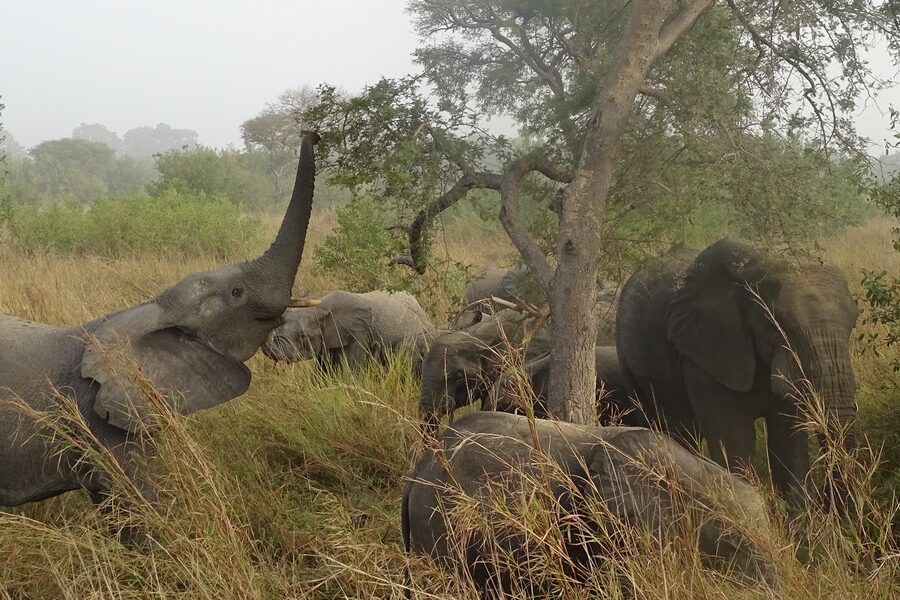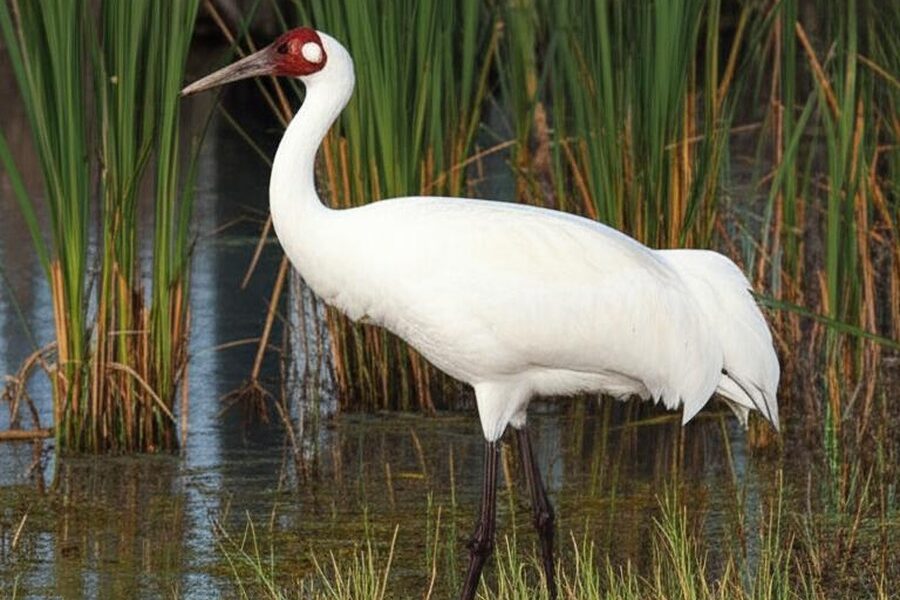Forests are rich, dynamic ecosystems, bustling with a myriad of creatures, many of which perform essential, often unseen, functions. From the towering canopies to the damp forest floor, a fascinating world of biodiversity unfolds, with countless species interacting in complex ways to sustain these vital green spaces.
Delving deeper into these intricate habitats, we’ve compiled a comprehensive guide to 40 forest spiders. This curated list spans a remarkable range, from the cleverly disguised Ant-mimic Jumping Spider to the distinctive Zebra Jumper. For each species, you’ll find detailed information on its Scientific Name, Body Length (mm), Venom Level, and Geographic Range, all meticulously organized below for your exploration.
What is the ecological role of spiders in a forest environment?
Forest spiders are vital predators, maintaining the balance of insect populations by preying on flies, mosquitoes, and other small invertebrates. This natural pest control helps protect forest vegetation and prevents outbreaks of certain insect species. They also serve as a significant food source for birds, lizards, and small mammals, integrating seamlessly into the forest food web and contributing to its overall health and stability.
Forest Spiders
| Common Name | Scientific Name | Body Length (mm) | Venom Level | Geographic Range |
|---|---|---|---|---|
| Goliath Birdeater | Theraphosa blondi | 120 | Painful Bite (Not Medically Significant) | South America |
| Sydney Funnel-web | Atrax robustus | 35 | Medically Significant | Australia |
| Golden Silk Orb-weaver | Trichonephila clavipes | 40 | Low (Not Harmful to Humans) | North & South America |
| Ogre-faced Spider | Deinopis spinosa | 20 | Harmless to Humans | North America (Southeastern US) |
| Social Huntsman Spider | Delena cancerides | 30 | Low (Not Harmful to Humans) | Australia |
| Carolina Wolf Spider | Hogna carolinensis | 35 | Low (Not Harmful to Humans) | North America |
| European Garden Spider | Araneus diadematus | 18 | Harmless to Humans | Europe, North America |
| Woodlouse Hunter | Dysdera crocata | 15 | Painful Bite (Not Medically Significant) | Europe (widespread globally) |
| Spiny Orb-weaver | Gasteracantha cancriformis | 10 | Harmless to Humans | North & South America |
| Bold Jumper | Phidippus audax | 15 | Low (Not Harmful to Humans) | North America |
| Purse-web Spider | Atypus affinis | 15 | Low (Not Harmful to Humans) | Europe, North Africa |
| Cobalt Blue Tarantula | Cyriopagopus lividus | 60 | Painful Bite (Medically Significant potential) | Southeast Asia |
| Six-spotted Fishing Spider | Dolomedes triton | 20 | Low (Not Harmful to Humans) | North America |
| Marbled Orb-weaver | Araneus marmoreus | 14 | Harmless to Humans | North America, Europe, Asia |
| Green Lynx Spider | Peucetia viridans | 16 | Low (Not Harmful to Humans) | North & South America |
| Mexican Redknee Tarantula | Brachypelma hamorii | 65 | Painful Bite (Urticating Hairs) | North America (Mexico) |
| European Nursery Web Spider | Pisaura mirabilis | 15 | Low (Not Harmful to Humans) | Europe, Asia |
| Armored Trapdoor Spider | Liphistius malayanus | 45 | Low (Not Harmful to Humans) | Southeast Asia |
| Brown Huntsman | Heteropoda venatoria | 30 | Low (Not Harmful to Humans) | Pantropical |
| Goldenrod Crab Spider | Misumena vatia | 10 | Harmless to Humans | North America, Europe, Asia |
| Rustic Wolf Spider | Trochosa ruricola | 15 | Harmless to Humans | Europe, Asia, North America |
| Wasp Spider | Argiope bruennichi | 17 | Harmless to Humans | Europe, Asia, North Africa |
| Bark Crab Spider | Philodromus dispar | 5 | Harmless to Humans | Europe |
| Tree-stump Trapdoor Spider | Conothele sidneyensis | 20 | Low (Not Harmful to Humans) | Australia |
| Common Hammock-weaver | Linyphia triangularis | 6 | Harmless to Humans | Europe |
| Zebra Jumper | Salticus scenicus | 7 | Harmless to Humans | Europe, North America, Asia |
| Green Crab Spider | Diaea dorsata | 6 | Harmless to Humans | Europe, Asia |
| European Cave Spider | Meta menardi | 16 | Harmless to Humans | Europe |
| Ant-mimic Jumping Spider | Myrmarachne formicaria | 6 | Harmless to Humans | Europe, Asia |
| Triangulate Comb-footed Spider | Steatoda triangulosa | 6 | Low (Not Harmful to Humans) | Widespread (global) |
| Long-jawed Orb Weaver | Tetragnatha extensa | 11 | Harmless to Humans | North America, Europe, Asia |
| Mouse Spider | Scotophaeus blackwalli | 12 | Low (Not Harmful to Humans) | Europe (introduced widespread) |
| Feather-legged Lace Weaver | Uloborus plumipes | 6 | Harmless to Humans (No Venom) | Widespread (global) |
| Velvet Spider | Eresus kollari | 11 | Low (Not Harmful to Humans) | Europe, Asia |
| Common Candy-striped Spider | Enoplognatha ovata | 6 | Harmless to Humans | North America, Europe |
| Four-spot Orb-weaver | Araneus quadratus | 17 | Harmless to Humans | Europe, Asia |
| Cucumber Green Spider | Araniella cucurbitina | 6 | Harmless to Humans | Europe, Asia |
| Spitting Spider | Scytodes thoracica | 6 | Harmless to Humans | Widespread (global) |
| Giant House Spider | Eratigena atrica | 18 | Low (Not Harmful to Humans) | Europe (introduced North America) |
| Pirate Spider | Ero furcata | 3 | Harmless to Humans | Europe, Asia |
Images and Descriptions
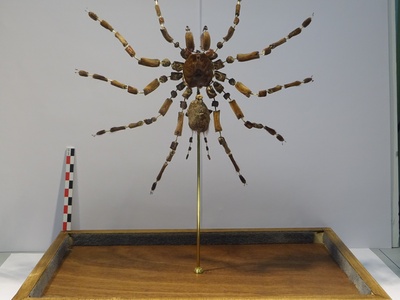
Goliath Birdeater
The world’s heaviest spider. This massive tarantula lives in burrows on the Amazon rainforest floor, hunting insects, frogs, and other small animals that wander past its lair.
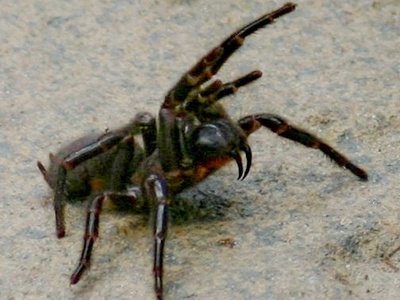
Sydney Funnel-web
One of the world’s most dangerous spiders, it builds silk-lined burrows with radiating trip-lines in sheltered spots on the forest floor, often under rocks or logs.
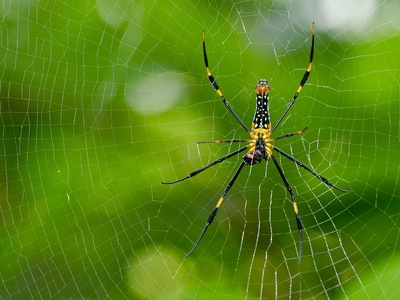
Golden Silk Orb-weaver
Famous for creating huge, strong webs with a beautiful golden sheen. These webs are a common sight in sunny gaps between trees in forests and can even occasionally trap small birds.
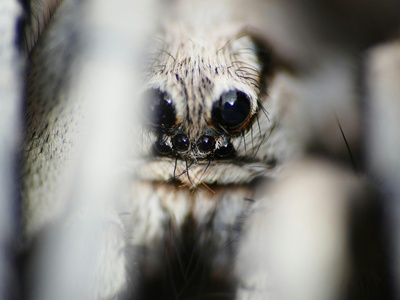
Ogre-faced Spider
A nocturnal master of ambush with enormous eyes. It weaves a tiny, stretchable net of silk that it holds with its front legs and casts down upon unsuspecting prey on the forest floor.
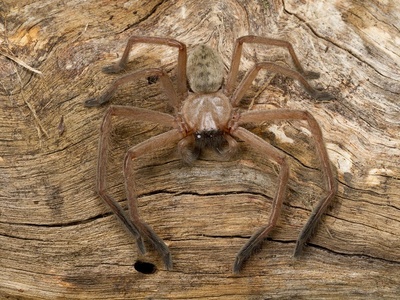
Social Huntsman Spider
A highly social species that lives in large family groups of up to 300 individuals. They share a retreat under the loose bark of trees and cooperate in raising their young.
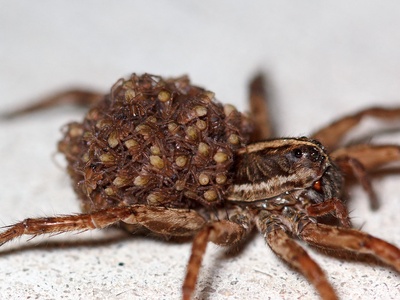
Carolina Wolf Spider
The largest wolf spider in North America. Instead of building a web, it actively hunts insects at night on the forest floor, relying on its excellent vision and impressive speed.
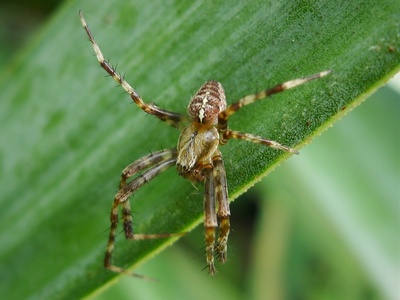
European Garden Spider
A classic orb-weaver easily identified by the white cross-shaped marking on its abdomen. It builds large, intricate spiral webs in open woodland, forest edges, and gardens.
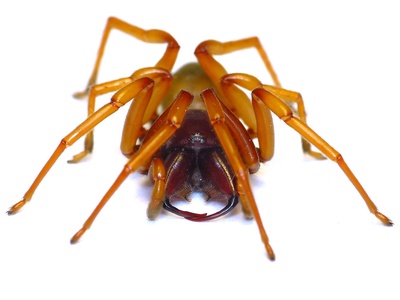
Woodlouse Hunter
Recognized by its reddish-orange body and huge fangs, this spider is a specialist predator. It prowls the forest floor at night, using its powerful jaws to pierce the tough armor of woodlice.
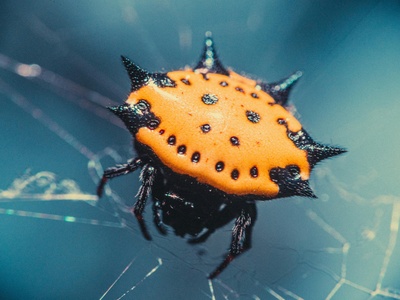
Spiny Orb-weaver
A small but striking spider with a hard, colorful abdomen adorned with prominent red or black spines. It builds its small orb webs in woodland edges and shrubby undergrowth.
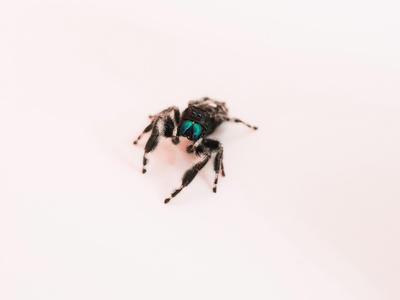
Bold Jumper
A curious and intelligent spider with excellent vision and often iridescent green fangs. It actively stalks and pounces on prey on tree trunks, foliage, and logs in open forests.
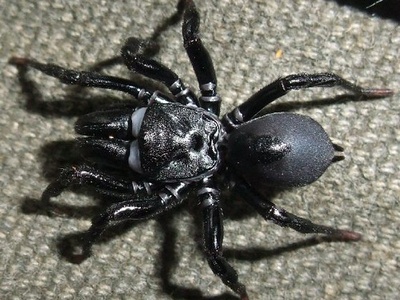
Purse-web Spider
An ancient spider that constructs a sealed silken tube, partly underground and partly on the surface. It ambushes insects that walk over the tube by striking through the silk wall.
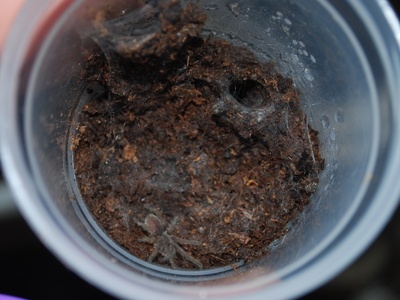
Cobalt Blue Tarantula
A stunning tarantula with brilliant, iridescent blue legs, seen mostly in adult females. This defensive species lives in deep burrows on the floor of tropical rainforests in Thailand and Myanmar.

Six-spotted Fishing Spider
A large spider found near ponds and slow streams within forests. It can run across the water’s surface and dive underneath to hunt aquatic insects, tadpoles, and even small fish.
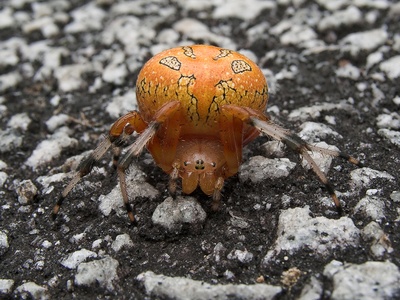
Marbled Orb-weaver
A beautiful spider, often with a vibrant orange or yellow abdomen. It builds its classic orb web in shrubs and low tree branches in moist woodlands and forest clearings each evening.
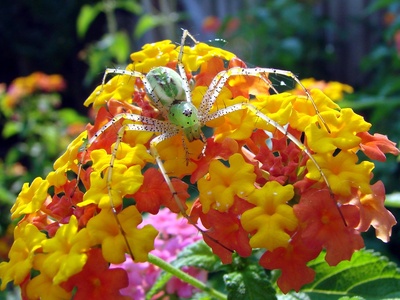
Green Lynx Spider
A vibrant, almost fluorescent green spider with long, spiny legs. An agile hunter, it leaps among plants in sunny forest clearings and is one of the few spiders known to spit venom for defense.
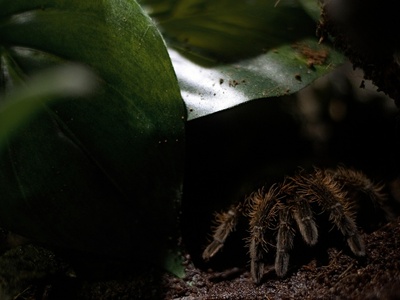
Mexican Redknee Tarantula
An iconic, docile tarantula with striking orange-red “knees” on its legs. It digs burrows to live in, and is commonly found in the dry forests and scrublands of Mexico’s Pacific coast.

European Nursery Web Spider
Named for its maternal care, the female carries her egg sac in her jaws, then builds a silken “nursery tent” in vegetation to protect the spiderlings after they hatch.
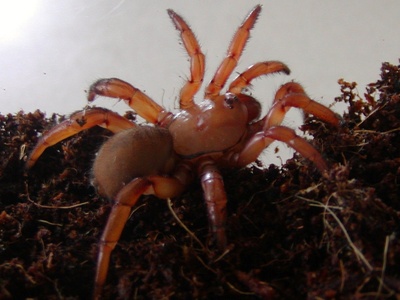
Armored Trapdoor Spider
A “living fossil” that shows its ancient origins with segmented plates on its abdomen. It lives in a camouflaged burrow in the rainforest, surrounded by silken tripwires to detect prey.
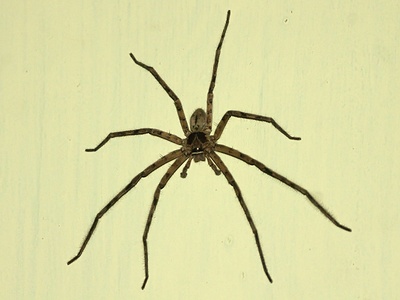
Brown Huntsman
A large, flattened spider built for pure speed. It actively chases down prey like cockroaches and crickets in tropical forests, often hiding under loose bark or in leaf litter during the day.
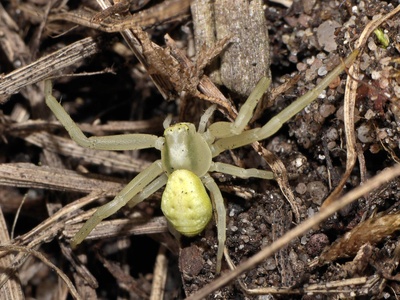
Goldenrod Crab Spider
A master of camouflage that can slowly change its body color between white and yellow to match the flower it is hiding on. It ambushes pollinating insects in forest clearings and meadows.
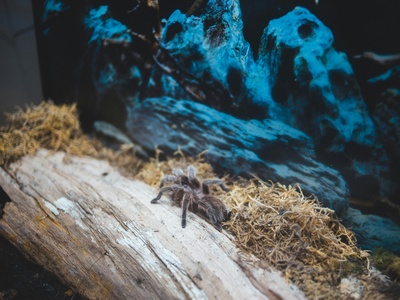
Rustic Wolf Spider
A common and robust wolf spider often found scurrying through leaf litter on the forest floor. Like other wolf spiders, the female carries her egg sac attached to her spinnerets.
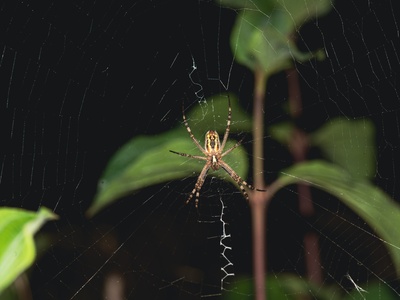
Wasp Spider
A striking orb-weaver whose yellow and black stripes mimic a wasp’s warning colors. It builds its web in tall grass in forest clearings, often decorating it with a zigzag silk pattern.
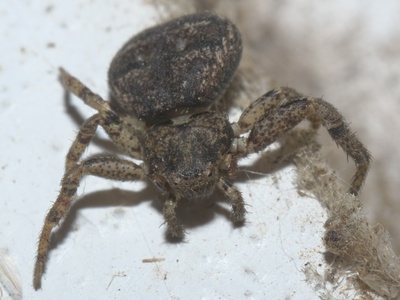
Bark Crab Spider
This flattened spider is a master of disguise, perfectly matching the lichen-covered bark of forest trees. It lies motionless in ambush for small insects that fail to notice its presence.
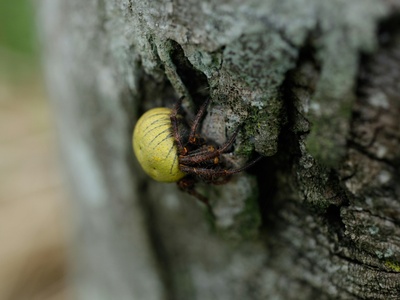
Tree-stump Trapdoor Spider
This clever spider builds its burrow on the side of tree trunks in Australian forests. The “trapdoor” lid is so perfectly camouflaged with moss and bark that it is nearly invisible.
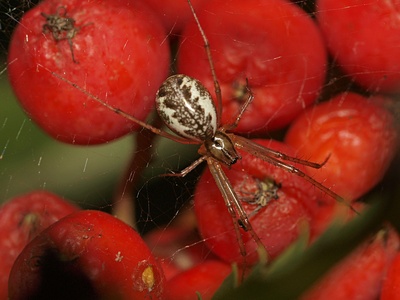
Common Hammock-weaver
A tiny spider that creates a complex web consisting of a horizontal hammock-like sheet with a tangle of knockdown threads above. It hangs upside down waiting for prey to fall onto its sheet.
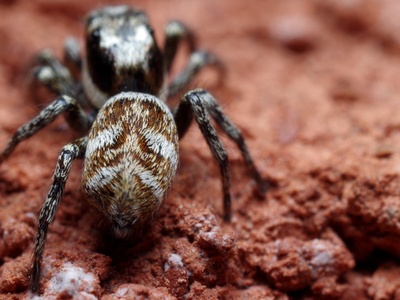
Zebra Jumper
A common jumping spider with a distinctive black-and-white striped pattern. It is often found hunting on sunlit tree trunks, fences, and walls at the edge of wooded areas.
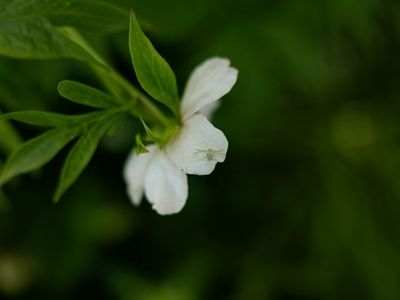
Green Crab Spider
A small, bright green crab spider that is perfectly camouflaged among the leaves of forest trees and shrubs. It is an ambush hunter that preys on small insects visiting foliage.
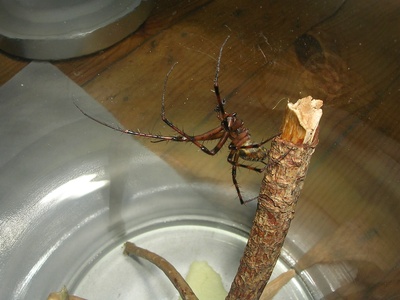
European Cave Spider
Despite its name, this large orb-weaver is common in dark, damp places like tree hollows, log piles, and cave entrances within forests, not just deep caves. It builds a sparse, three-dimensional web.
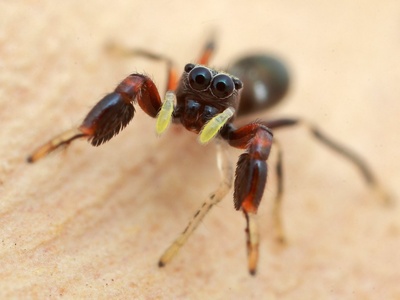
Ant-mimic Jumping Spider
This amazing spider mimics the appearance and walking behavior of an ant to avoid predators. It lives among low vegetation in open woodlands, waving its front legs like antennae.
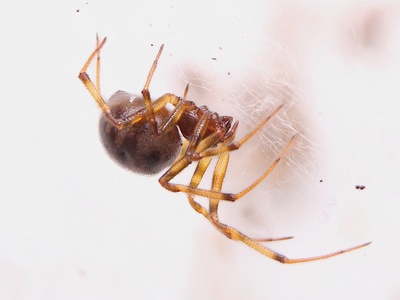
Triangulate Comb-footed Spider
Often found in homes, this species is also very common in forests, building its tangled cobweb under logs, in tree hollows, and under rocks. It is a relative of the widow spiders.
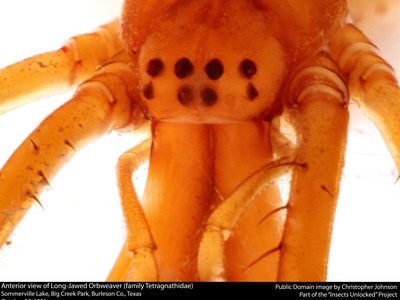
Long-jawed Orb Weaver
Recognized by its elongated body and extremely long chelicerae (jaws). It builds its horizontal orb web on vegetation near water sources within forested areas.
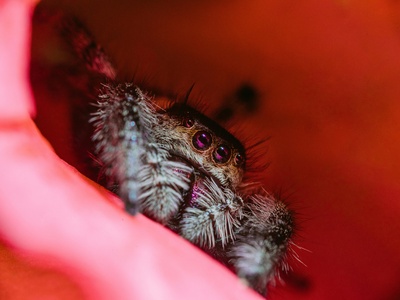
Mouse Spider
A velvety, mouse-grey ground spider that actively hunts at night. It is frequently found under bark and in the leaf litter of woodlands, preying on other invertebrates.
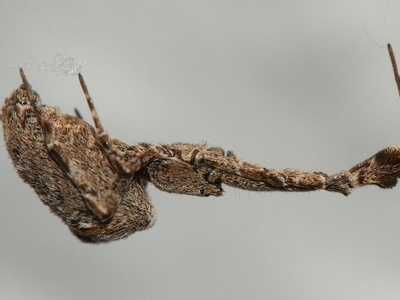
Feather-legged Lace Weaver
A fascinating spider that lacks venom glands entirely. It builds a small, horizontal orb web in the forest understory and wraps its prey so tightly in silk that it crushes it.
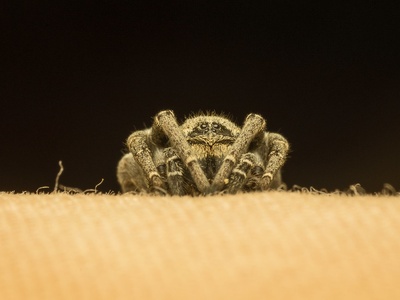
Velvet Spider
A stocky, velvety spider where the male is a spectacular black with a bright red abdomen. It lives in a silk-lined tube under stones or in moss in warm, open forests.
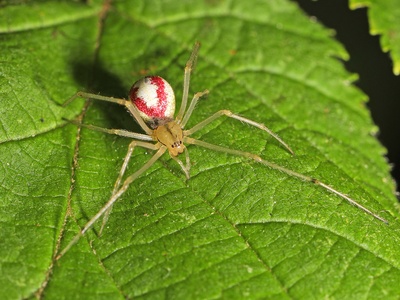
Common Candy-striped Spider
A small spider with a strikingly variable, often colorful abdomen that can be white, yellow, or red-striped. It builds a simple tangled web in the leaves of shrubs at forest edges.
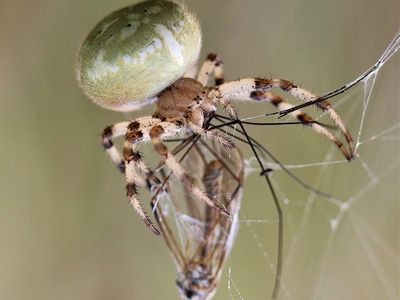
Four-spot Orb-weaver
One of Europe’s heaviest spiders, this orb-weaver has a highly variable-colored abdomen with four distinct white spots. It builds its large web in low vegetation in forest clearings.
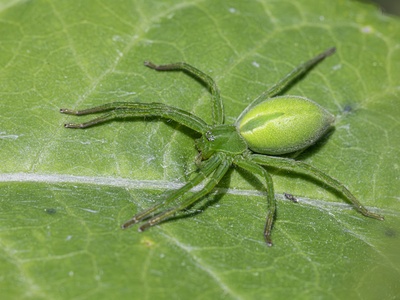
Cucumber Green Spider
A small, vibrant green orb-weaver, named for its cucumber-like coloration. It is perfectly camouflaged among the green leaves of trees and shrubs in woodlands where it builds its web.
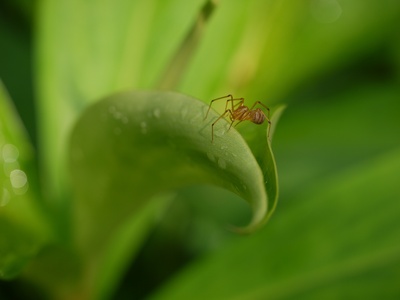
Spitting Spider
A slow-moving nocturnal hunter found in forest leaf litter and under bark. It uniquely captures prey by spitting a venomous, sticky silk substance in a zigzag pattern to immobilize it.
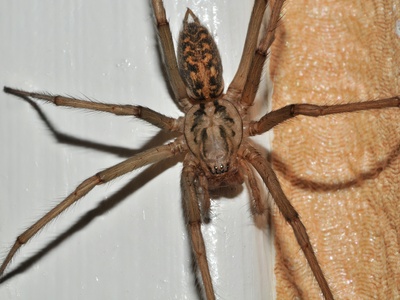
Giant House Spider
While famous as a house spider, its native habitat is the forest floor, living under logs and rocks. It builds a messy, sheet-like web with a funnel-shaped retreat.
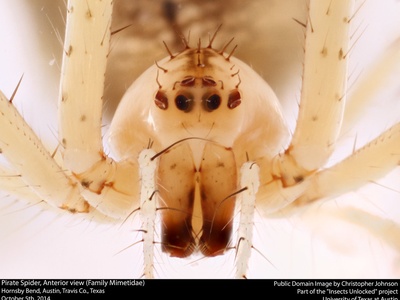
Pirate Spider
A tiny specialist predator that hunts other spiders. It cautiously approaches another spider’s web and plucks the silk strands to mimic trapped prey, then attacks the unsuspecting owner.
